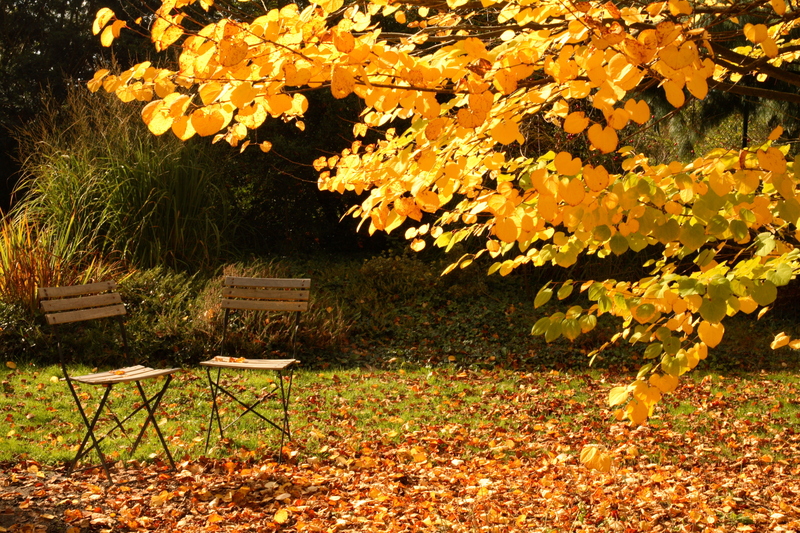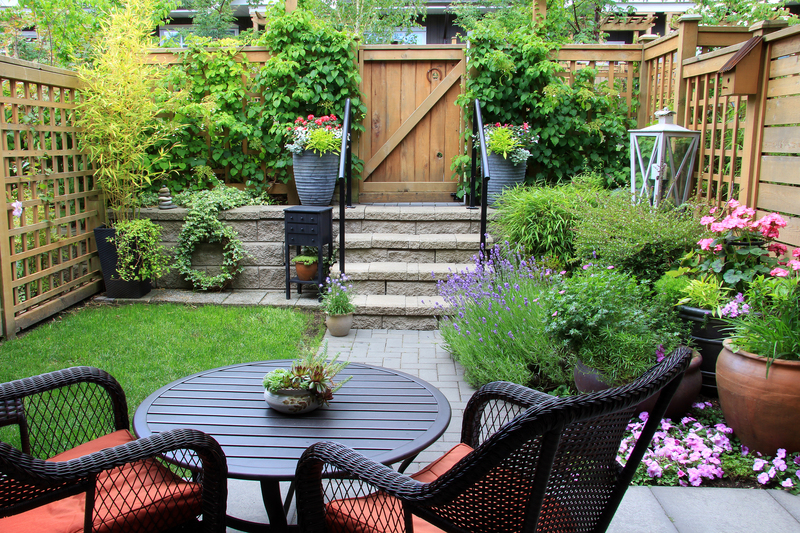Brighten Up With Annuals Made for Window Box Displays: A Complete Guide
Want to enhance your home's curb appeal? There's an easy, affordable way to add color, joy, and a burst of life to your windows: annuals made for window box displays. Whether you're looking to embellish a townhouse, cottage, or urban apartment, window boxes packed with vibrant annual blooms are a simple charm that never goes out of style.
This comprehensive guide will help you choose, plant, and care for the best annuals for your window boxes, ensuring they stay beautiful and healthy all season long.
Why Choose Annuals for Window Box Displays?
Annual plants complete their entire life cycle in one growing season, providing rapid growth and continuous, energetic blooms. Here's why they are the number one choice for window box planters:
- Continuous Color: Annuals bloom profusely throughout the spring, summer, and often into fall.
- Versatility: With countless colors, forms, and textures, they allow for endless creativity in designing your window box displays.
- Easy Refresh: Since they don't overwinter, you can swap out themes and color schemes each year based on your evolving taste.
- Affordable: Annuals are generally inexpensive and widely available at nurseries, garden centers, and home improvement stores.
Brighten up your home's exterior and enjoy a revolving pageant of flowers--window boxes filled with annuals are a dynamic, ever-changing focal point!

Planning Your Window Box Design
Before planting, take some time to plan your window box display. This will ensure your arrangement thrives and remains visually stunning throughout the growing season.
Assess Light Conditions
Sunlight is the chief factor when choosing your annuals. Take note of how much sun your window box receives per day:
- Full Sun: 6 or more hours of direct sunlight
- Partial Sun/Part Shade: 3-6 hours of morning or late afternoon sun
- Full Shade: Less than 3 hours of direct sunlight
Select annuals appropriate for those light conditions for lush, healthy growth.
Choose a Color Scheme
A cohesive color palette makes a dramatic impact. Consider complementary or contrasting combinations, such as:
- Cool tones: Blues, purples, and whites for a calming effect
- Warm hues: Reds, oranges, and yellows for a lively, energetic look
- Monochromatic: Various shades of one color for a modern vibe
- Bold contrasts: Mix opposites, like yellow and purple, for extra pop
Think in Layers: Thriller, Filler, Spiller
Professional window box designers use the thriller-filler-spiller technique for abundant, eye-catching displays. Here's how it works:
- Thrillers: Tall, vertical plants that form a backdrop (e.g., Salvia, snapdragon)
- Fillers: Mid-sized, bushy plants that fill the center (e.g., petunias, marigolds)
- Spillers: Trailing plants that cascade over the box edge (e.g., lobelia, sweet potato vine)
_Strive for a well-balanced mix--this will make your window box floral display lush from every angle!_
Top Annuals for Window Box Displays
Here is a curated list of top-performing annuals that thrive in window boxes. Select a variety based on your light exposure and desired effect.
Best Annuals for Sunny Window Boxes
- Petunias: Available in many hues; unloads non-stop flowers all summer.
- Geraniums (Pelargonium): Sun-loving classics in bold reds, whites, and pinks.
- Marigolds: Cheerful, durable blooms in golds, oranges, and creams.
- Verbena: Heat-tolerant, trailing flowers ideal for the front of boxes.
- Calibrachoa (Million Bells): Prolific, petunia-like blooms with amazing trailing habits.
- Snapdragons: Add height and fun dragon-shaped blossoms in bright shades.
- Zinnias: Bold colors, easy to grow, and attracts pollinators.
Best Annuals for Part Shade to Shady Window Boxes
- Impatiens: A time-tested favorite for low-light boxes, with abundant blooms.
- Begonias: Waxy foliage and profuse flowers, perfect for shade.
- Lobelia: Beautiful trailing blue or white flowers for spilling over edges.
- Torenia (Wishbone flower): Unique, snapdragon-like flowers in cool tones.
- Fuchsia: Dramatic pendulous flowers; ideal for cool, shaded spots.
- Coleus: Especially grown for their colorful, patterned foliage.
- Sweet alyssum: Spilling white or purple clusters that are deer-resistant and fragrant.
How to Plant and Maintain a Window Box With Annuals
1. Prepare the Window Box
- Material: Use wood, plastic, metal, or composite boxes. Ensure proper drainage.
- Drainage Holes: Allow excess water to escape, preventing root rot.
- Water Reservoir: Consider self-watering models to reduce maintenance.
2. Use a Premium Potting Mix
Ordinary garden soil compacts in containers. Instead, use a high-quality, lightweight potting mix with added slow-release fertilizer for best results.
3. Arrange Your Annuals
- Start with thrillers in the back or center, depending on box placement.
- Add fillers around the thrillers for fullness and texture.
- Finish with spillers to drape artfully over box edges.
- Gently remove plant starts from their pots and loosen roots before planting.
4. Water Thoroughly and Regularly
Window box annuals often dry out faster than those in the ground. Water until moisture runs out the drainage holes. Check daily, especially during hot spells.
5. Feed for Continual Blooms
Mix slow-release fertilizer into the potting mix and supplement with a liquid fertilizer every 2-4 weeks. This keeps blooms prolific and foliage lush.
6. Deadhead and Groom for Best Performance
- Pinch off faded blooms to encourage new flowers.
- Remove dead, yellowed, or damaged leaves.
- Trim leggy growth to maintain the window box's shape and fullness.
Creative Theme Ideas for Your Window Box Display
Looking to brighten up your window box with annuals in a truly unique way? Try one of these imaginative themes for inspiration:
1. Cottage Garden Charm
- Mix sweet alyssum, trailing lobelia, and pastel petunias with fragrant sweet peas.
- Add some upright snapdragons or foxglove for vertical interest.
2. Mediterranean Bold
- Use geraniums, blue lobelia, and golden marigolds for a sun-drenched palette.
- Include draping vinca or potato vine for lush greenery.
3. Pollinator's Paradise
- Combine zinnias, verbena, and sweet alyssum for bees and butterflies.
- Add some trailing nasturtiums (whose flowers are edible, too!).
4. Dramatic Nightfall
- Choose dark-leaved coleus and deep purple petunias, offset by white begonias.
- Finish with silvery licorice plant or dusty miller for nocturnal beauty.
5. Edible Window Box
- Mix cherry tomatoes, compact peppers, and herbs like basil and chives.
- Edge with edible flowers such as nasturtium or viola for splashy color.
Tips for Long-Lasting Annual Flower Boxes
- Rotate Your Boxes: If portable, rotate them every week to ensure even sun exposure and growth.
- Watch for Pests: Inspect regularly for aphids, spider mites, and whiteflies. Use insecticidal soap if necessary.
- Don't Overcrowd: Leave space for each plant to grow and spread--overcrowding leads to disease and wilting.
- Mulch Lightly: Top the soil with a thin layer of decorative bark or moss to reduce evaporation.
- Support Tall Plants: Use miniature stakes or bamboo canes if necessary, especially in windy spots.
- Plan for Replacement: If a plant declines midseason, don't hesitate to swap it out with a new one for a refreshed look.
Seasonal Transition: Extending Your Window Box Display
Just because summer ends doesn't mean your window boxes must go barren. Here's how to transition using annual and seasonal favorites:
Early Spring
- Fill boxes with cold-tolerant annuals: pansies, violas, and snapdragons.
- Try ornamental grasses and spring bulbs (daffodils, tulips) for early color.
Autumn Update
- Replace tired summer annuals with ornamental kale, pansies, asters, and mums.
- Accent with mini pumpkins or gourds for festive flair.

Frequently Asked Questions About Annual Window Box Displays
How often should I water annual window boxes?
*Window boxes dry out quickly*, especially in warm, windy, or sunny weather. Check soil moisture daily using your finger. If it's dry an inch down, water thoroughly! In extreme heat, twice-daily watering may be needed.
What's the best fertilizer for window box annuals?
Opt for slow-release granules mixed into the soil, then supplement with a balanced liquid fertilizer (like 10-10-10) every 2-4 weeks to promote healthy, lush blooming.
Should I line my window box?
Yes! A liner (plastic, burlap, or coco fiber) retains moisture while allowing good drainage. It also protects wooden boxes from rot.
Can I mix annuals with perennials or bulbs?
Absolutely! Many gardeners tuck spring bulbs or compact perennials alongside annuals for multi-season interest. Just ensure all plants have similar light and water needs.
Final Thoughts: Bring Joy and Color to Your Home With Window Box Annuals
There's a reason window boxes full of annuals have been beloved for centuries. Vibrant, welcoming, and endlessly customizable, they're one of the simplest ways to brighten your living space from the outside in.
- Experiment with color and plant combinations to find your signature style.
- Remember the thriller-filler-spiller formula for full, lush boxes.
- Keep up with regular watering, feeding, and grooming for the longest-lasting blooms.
With a little creativity and attention, your annual window box display will turn heads and make coming home a joy--season after season.
Start planning your window box transformation today, and let your home bloom with personality and color!